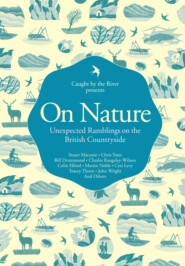По всем вопросам обращайтесь на: info@litportal.ru
(©) 2003-2025.
✖
How Can I Stop Climate Change: What is it and how to help
Настройки чтения
Размер шрифта
Высота строк
Поля
UK path to a safer future
Steady but steep - the UK needs to make serious cuts in carbon dioxide emissions over the next 40 years to play its part in avoiding runaway climate change. Based on research by the Tyndall Centre for Climate Change Research at the University of Manchester, the chart assumes the need to stabilise atmospheric carbon dioxide at 450 ppm.
To stay within a 2°C rise the science tells us we would need to keep greenhouse gases (and other pollutants) at no more than 450 parts per million carbon dioxide equivalent. But we’re already racing towards that threshold: carbon dioxide alone had already reached 380 ppm in 2006, and emissions are rising by nearly 2 ppm per year.
And there’s more. As a result of the carbon dioxide already in the atmosphere scientists warn that 2°C could be the lowest increase we can hope for.
So how much time do we have to turn things around? Because carbon dioxide stays in the atmosphere for so long, and because it takes a while for it to affect the climate, the fossil fuel we burn in power stations today will still be affecting the climate at the start of the next century. That means we have to reduce emissions as quickly as possible, rather than hoping to make big cuts five years from now. The sooner we make cuts, the better.
Two facts illustrate the urgency of the task that faces us if we want to stay within a 2°C rise:
1 Greenhouse gas emissions have to start falling by 2015. They must then continue to decline.
2 Industrialised countries need to cut emissions by about 90 per cent by the middle of this century.
So can it be done? Some argue that it is unrealistic to expect to cut carbon emissions quickly and deeply enough to stay within 2°C. But the scientific consensus is that we must.
where in the world do the emissions come from?
Most carbon emissions from human activity come from industrialised countries, whose economies rely on manufacturing and transport powered largely by fossil fuels.
The United States, home to fewer than 1 in every 20 people in the world, is responsible for about a fifth of global carbon dioxide emissions.
Europe accounts for 15 per cent of global carbon dioxide emissions, working out at around 9.3 tonnes per person per year. That’s enough to fill two Olympic swimming pools for every person in Europe.
China became the biggest emitter of carbon dioxide in 2006. But China’s emissions per person are less than those of the United States: in 2003 the average American emitted nearly six times as much carbon dioxide as the average person in China.
Across the world average emissions were 3.7 tonnes per person in 2003. But in some African countries, such as Mali and Burundi, they were less than 0.1 tonnes per person.
Comparative worldwide emissions (2003)
NB: Includes international aviation and shipping, excludes land use change. Source: World Resources Institute
A country’s greenhouse gas emissions depend on the size of its economy, the types of industry it has and the kinds of energy it uses. Demand for heating and air conditioning are also key factors: rich countries with hot summers use lots of energy for air-conditioning; cold countries use more for heating.
China has become a major emitter of greenhouse gases only in the past 20 years while the United States and the UK have been pumping out carbon dioxide throughout the past century. And it is the total quantity of carbon dioxide in the atmosphere that is driving global warming, not just the annual amount added to this total. So it’s the developed countries that are mostly responsible for the problem.
seven people who can make a difference
1 The President of the United States
2 The President of China
3 The British Prime Minister
4 The Mayor of London
5 Your boss
6 Your council leader
7 You
comparing carbon footprints
A country’s real contribution to the total amount of greenhouse gases in the atmosphere depends not just on the energy it uses, but also on the way it uses land and the stuff it consumes. The amount of land being farmed will affect emissions of methane and nitrous oxide as well as the amount of carbon dioxide held by the soil. (Forests help remove carbon dioxide from the atmosphere.) Goods imported from overseas also have their own carbon footprint and use up natural resources.
To get a clear picture of a country’s overall footprint, then, we need to look at what it is consuming, including imports. The Global Footprint Network uses information on all of these areas to estimate each country’s total impact on the planet in terms of environmental cost, and has come up with a measure it calls global hectares. Using this measure, humanity’s global footprint is put at 13.9 billion global hectares. That’s 24 per cent more than the natural resources available on Earth. This is a problem: we are exceeding the planet’s ability to absorb our impact.
Global footprints (global hectares/person, 2003)
UK emissions
Half a billion tonnes. That’s how much carbon dioxide the UK emits each year. Some 60.2 million people live in the UK – that’s just less than one in every 100 people in the world; but in 2005 our emissions were around 2 per cent of the global total – double our fair share.
In fact the true total is even higher: 556 million tonnes is the official figure, but that doesn’t include our share of emissions from international aviation and shipping; nor the emissions created by all the products we buy from overseas.
Add to that the UK’s history and the footprint gets heavier still. We have been pumping out carbon dioxide since the Industrial Revolution. It is this historical record that leads many to argue that greenhouse gas emissions are a problem created by the developed countries, including the UK, and to insist that it is the old industrial world’s responsibility to reduce its emissions first. Richer countries, particularly the United States, have been reluctant to cut emissions before developing nations do, claiming it will damage their economies. This has been a major barrier to international agreements to tackle climate change.
the need to cut
Politicians may argue about who is responsible for cutting just how much carbon dioxide; but to keep within the 2°C threshold, globally we need to reduce emissions of carbon dioxide massively by 2050. This looks like a tall order – but it is possible.
Where can the cuts come from? And what difference will they make to the way we live?
is it all about population growth?
Some people argue that tackling climate change means doing something about the world’s growing population: the Earth’s resources are limited and there simply is no longer enough to go around if we go on consuming at this rate; our survival, some say, depends on keeping our numbers down.
The global population has grown more than six-fold just over 200 years to around 6.6 billion in 2007. It is expected to stabilise at around 9.2 billion by mid-century. But the countries with the fastest growing populations are among those who have done the least to affect climate change
Carbon dioxide emissions per person are far higher in the richest countries of the world such as the United States, Canada, Japan, Australia and the UK. By contrast, many countries in Africa have per capita emissions that are negligible in comparison – less than one-hundredth the level. Many countries in Latin America have per capita emissions that are only around one-tenth those of the richest countries.
Global population is not the root of the problem: it is the rapid use of energy and natural resources by the richer and fossil-fuel dependent economies that is putting pressure on the planet.
Carbon-dating climate change – a timeline
End of the Permian period (251 million years ago). Geological evidence suggests carbon dioxide concentrations were four times higher than today. Much of Central Europe and the southern United States was desert, and seas were 20 metres higher. Methane releases from the sea beds are thought to have wiped out many living things. Some estimates suggest that 95 per cent of life on Earth was eradicated.
Start of the Holocene (10,000 years ago). End of the last ice age and the beginning of a relatively stable climate.
Medieval Warm Period (900-1200 AD). Relative warming in the Northern Hemisphere, with wine grown in the UK and droughts in North America. Temperatures in Europe are thought to have been 1°C -2°C warmer than at the start of the 20th century, but little evidence exists of warming on a global scale.
1750-1800 Start of the Industrial Revolution and the use of coal to drive industry.
1800 Start of the Anthropocene. According to some climate scientists, the stable period of the Holocene is coming to an end: humanity’s influence over the world’s climate is so great that the current age should be known as the Anthropocene.
1896 Svante Arrhenius, a Swedish chemist, identifies the global warming properties of greenhouse gases, predicting that a doubling of carbon dioxide levels could raise temperatures by 5°C.











